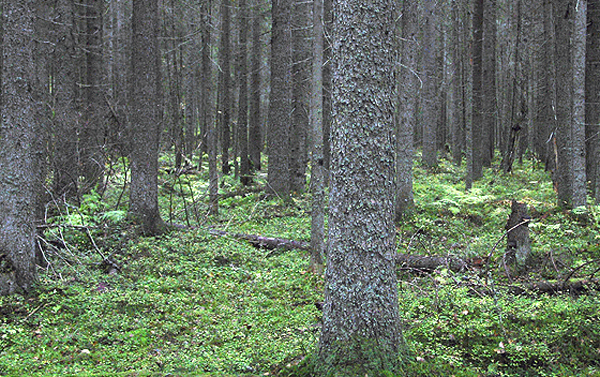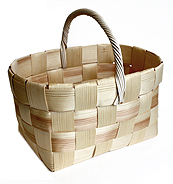Environmental issues related to wood can be approached from many different points of view: an individual person walking in the nature, forest owners, the industry using wood as raw material, or the people buying the products made by the industry.

Those who walk, ski, hike etc in the forests are interested in nature and its diversity. In Finland the traditional legal concept of everyman’s right defines a person’s rights to move in the nature and pick the natural products such as wild berries and mushrooms, no matter who owns the land.
Everyman’s rights
You may
- walk, ski or cycle in areas outside private gardens and land that is in a specific use (for example cultivated fields and plantations)
- stay for a short period in any area where access is otherwise allowed (for example put up a tent, but not too close to people’s homes)
- pick wild berries, mushrooms and flowers
- fish with a rod and line, and through a hole in the ice in wintertime
- boat when the water is melt or walk on the ice in wintertime.
You may not
- disturb other people or damage the environment
- disturb nesting birds or game
- cut down or damage trees
- collect moss, lichen, soil or wood
- disturb the privacy of homes
- litter
- drive a motor vehicle off the road without the landowner’s permission
- fish and hunt without the appropriate permits.
Everyman’s rights in a nutshell
On woodland owners’ point of view the appropriate environment protection pre-requisites the certification of woods. The certification is a proof that the forests are managed according to sound environmental, social and economic practises adapted to local conditions, and so it improves market prospects for the timber. During the certification process the forest is identified and classified for instance according to the biotope. Protecting biotopes is part of good management required by the certification
Wood refining industry can use certification to improve the public image and to promote sales. Sustainable forestry and the certifications are a competitive advantage to both landowners and the wood refining industry. To be able to use the competitive advantage, as a whole, the company must be able to inform its customers reliably and explicably about forestry. This is where the company can use the certification.
A consumer can best affect the environmental issues of forests by purchasing the wood and paper products that have been produced by using raw material harvested from certified forests. Certification gives an environmentally conscious consumer the possibility to check that the products he/she is buying have not caused any damage to the woods or the nature in forests. For a consumer the certificate is often the only way to check if the product comes from sustainably managed forests.
